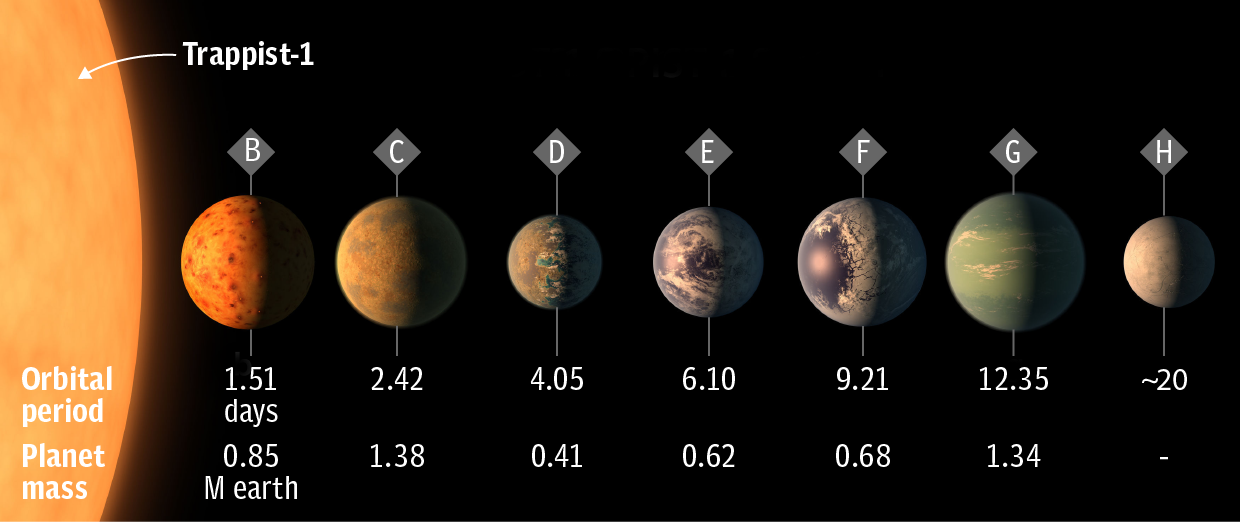An international team of astronomers has discovered seven potentially habitable exoplanets — or planets outside our solar system — that could have liquid water on their surfaces, according to a paper published Wednesday in the journal Nature.
It is unclear whether any of the newly discovered planets can harbor life. However, scientists pointed out that the new planetary system orbits TRAPPIST-1, a dwarf star that is much younger than our sun and that will continue to burn for another 10 trillion years — more than 700 times longer than the universe has existed so far.
Astronomers said that is “arguably enough time for life to evolve,” the article reported.
TRAPPIST-1 is about 39 light-years away, in the constellation Aquarius.
The seven newly discovered planets orbiting TRAPPIST-1 have been nicknamed “Earth’s seven sisters” and have masses similar to that of Earth’s, in addition to having rocky compositions like our planet, scientists said.
Astronomers noted, though, that they are awaiting the scheduled launch of NASA’s James Webb Space Telescope in 2018 to confirm what conditions — such as atmospheric composition and climate — are like on the exoplanets. The James Webb Space Telescope is expected to be significantly more powerful than the Hubble Space Telescope.
The discovery of the new planetary system has also indicated that Earth-sized planets are much more abundant and common in the Milky Way galaxy than previously thought, researchers said.
The international team of astronomers that discovered the new exoplanets said they will be ramping up their efforts to locate and identify other planets around small stars in the vicinity of our sun through project Search for Habitable Planets Eclipsing Ultra-Cool Stars (SPECULOOS).
Additionally, NASA said it plans to launch the Transiting Exoplanet Survey Satellite (TESS), a space telescope that will spend two years finding planets orbiting over 200,000 of the brightest stars in the sky.
Ask me anything
Explore related questions





